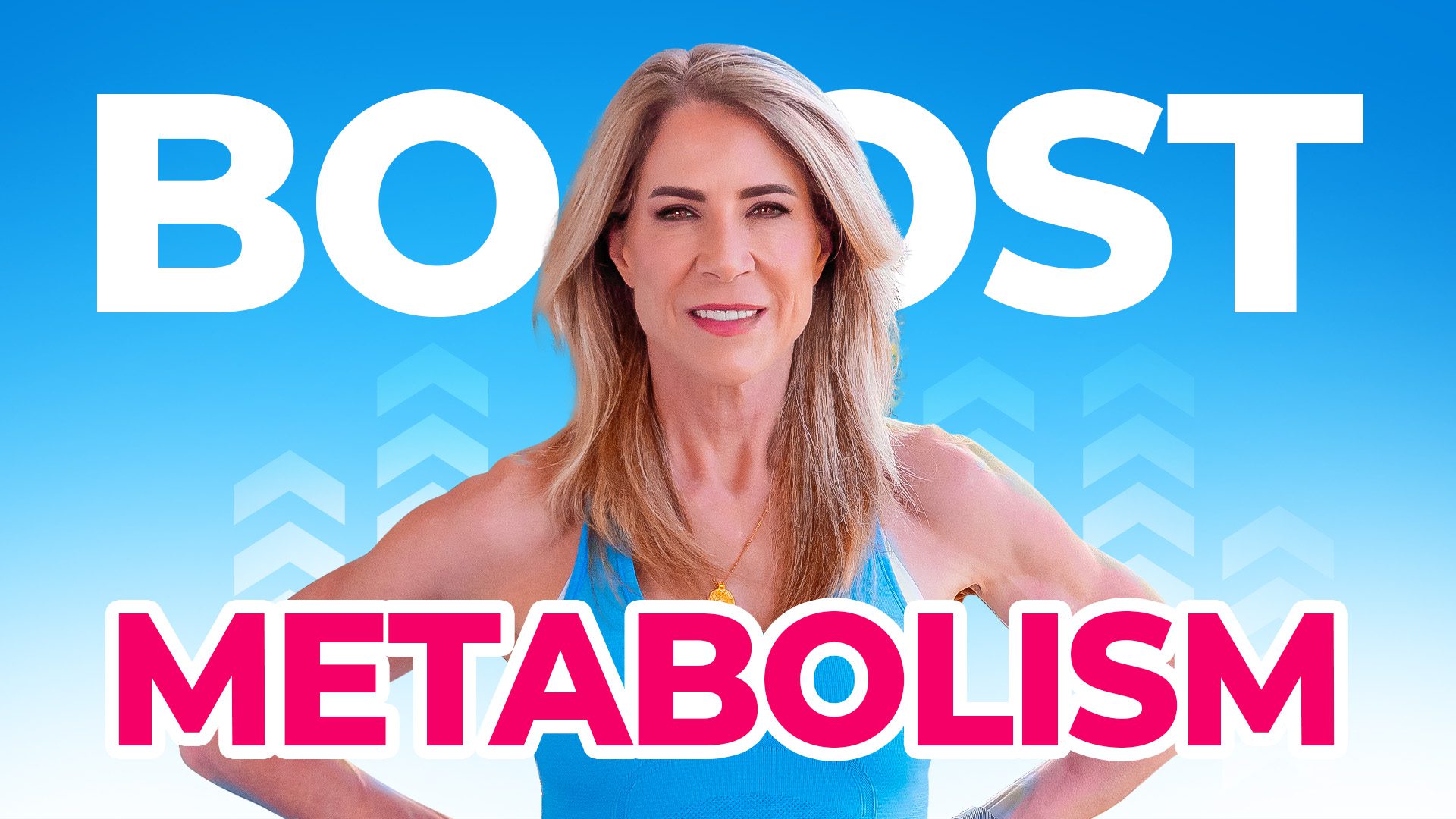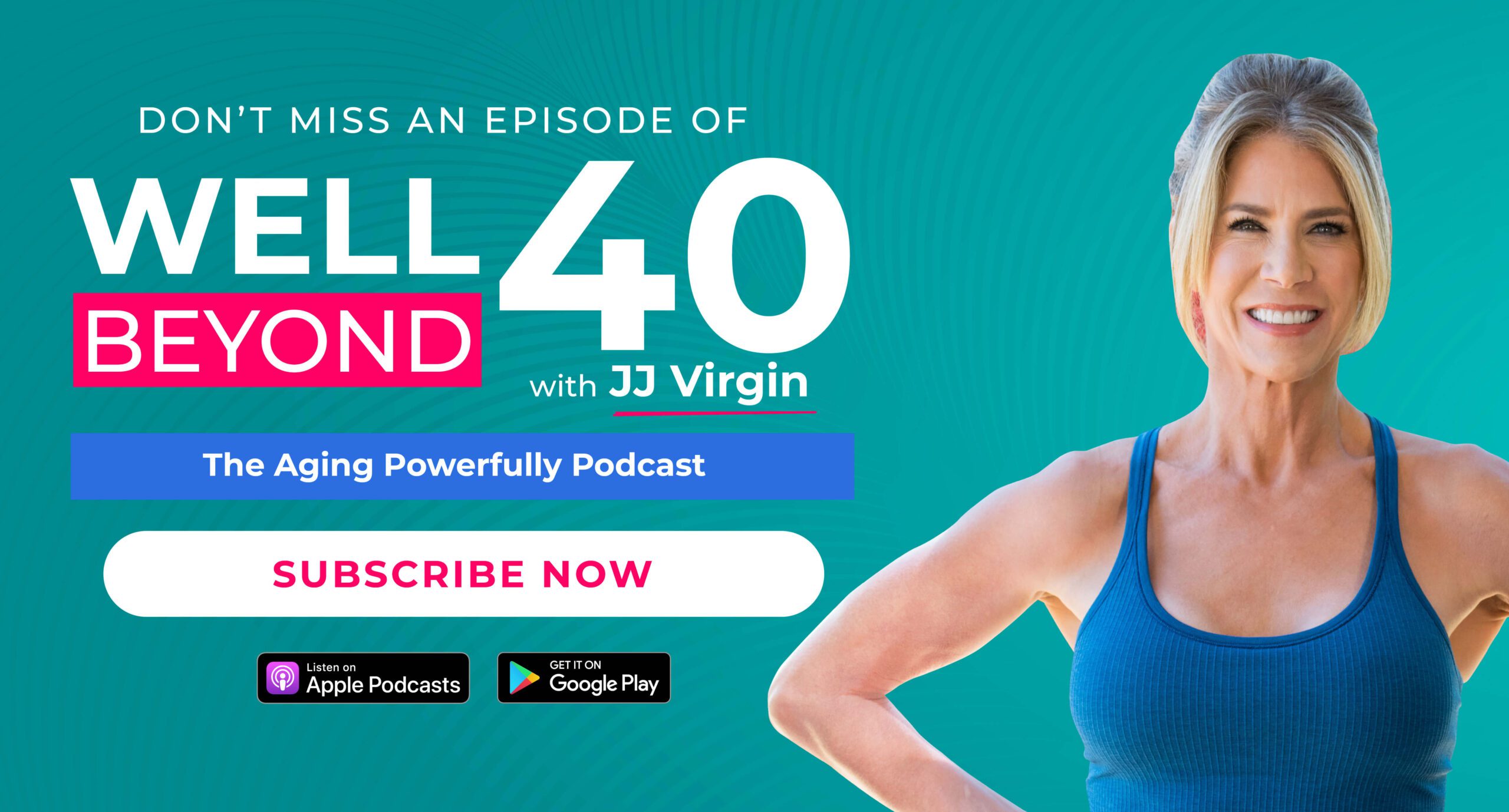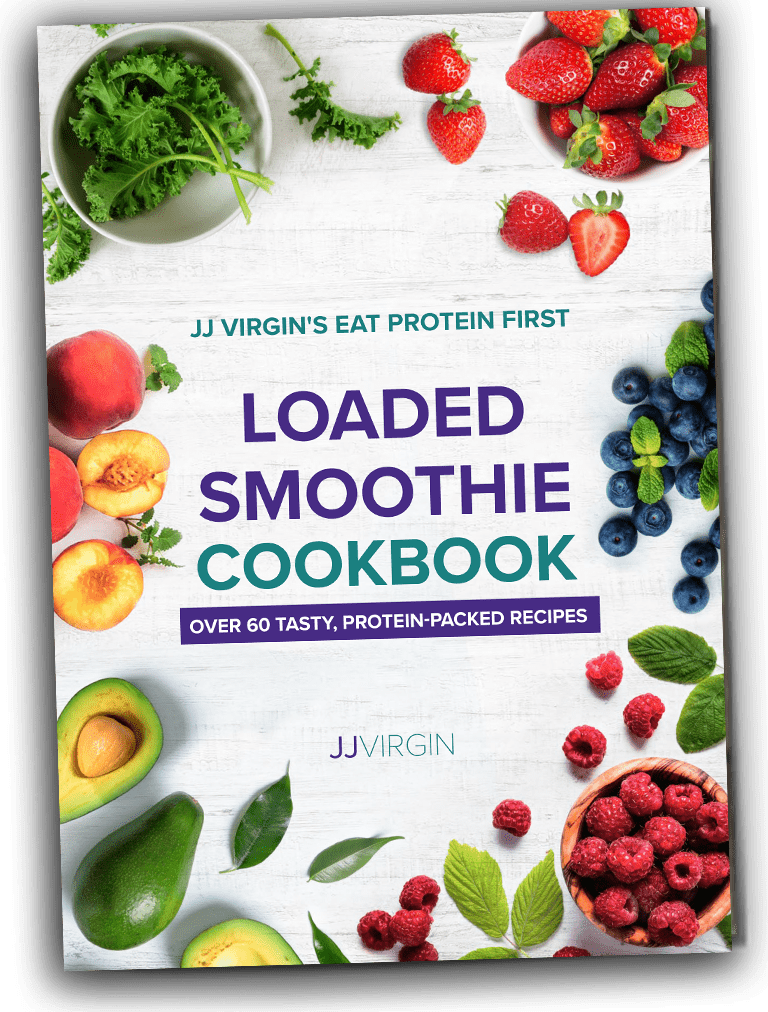Skip the Bicep Curls and Do This Instead
If you want arms that can handle heavy lifting and look amazing in a sleeveless dress, it’s time to ditch the long routines with too many exercises.
The truth is, you need just three moves to get strong, sexy arms. (But only do them if you want to improve your back, core, and glutes, too.) In this episode, I’m telling you exactly what to do and how to do it right, as well as offering variations and modifications for injuries.
On top of that, you’ll learn how to feed your muscle growth, how to recover better, and the surprising way you’re actually building muscle.
Go ahead and listen to it now, then watch the video on my YouTube channel to see the moves in action. Feel free to watch and remind yourself of the proper form during your workout, too.
If you want the strongest, sexiest arms of your life, start with this episode!
Timestamps
00:01:28 – Why I don’t do bicep curls and tricep kickbacks
00:02:47 – How many reps should you do to build muscle?
00:04:53 – Do this before you start lifting weights
00:07:10 – Why do I love push-ups?
00:08:41 – The real reason we do resistance training
00:10:10 – This exercise variation helps with bone mineral density
00:11:26 – How do you feed muscle growth?
00:13:06 – When you actually build muscle
Resources Mentioned in this episode
Watch the FULL VIDEO on my YouTube Channel
Download my free Resistance Training Cheat Sheet
Read my book, The Sugar Impact Diet
Get dumbbells for your home workouts
Get a weight bench
Reignite Wellness™ All-In-One Shakes
Reignite Wellness™ Clean Creatine Powder
Reignite Wellness™ ElectroReplenish
Reignite Wellness™ Sleep Candy
Video: How to Sleep Better
Video: The Hidden Reason You Wake Up Tired Every Day
Kooru Cold Plunge use code JJVIP500 for $500 off
Video: Six Simple Strategies for Fast, Lasting Fat Loss
ATHE_Transcript_Ep 608_The 3-Part Arm Workout You Can Do at Home in Less Than 15 Minutes
JJ Virgin: [00:00:00] I’m JJ Virgin, PhD dropout, sorry mom, turned four time New York Times best selling author. Yes, I’m a certified nutrition specialist, fitness hall of famer, and I speak at health conferences and trainings around the globe, but I’m driven by my insatiable curiosity and love of science to keep asking questions, digging for answers, and sharing the information I uncover with as many people as I can, and that’s why I created the Well Beyond 40 To synthesize and simplify the science of health into actionable strategies to help you thrive.
In each episode, we’ll talk about what’s working in the world of wellness, from personalized nutrition and healing your metabolism, to healthy aging and prescriptive fitness. Join me on the journey to better health so you can love how you look and feel right now and have the energy to play full out.[00:01:00]
When you think about strong, toned, defined arms, you probably think you need to focus on bicep curls and tricep extensions. So, it may surprise you to discover that these are exercises that I rarely include in my upper body workouts. I’m going to share my three part arm workout that will make you want to go sleeveless even in the winter and the strategies beyond the training that are mission critical for great arms.
First of all, I know I kind of threw a curveball there saying I don’t do bicep curls. And triceps, but I’ll tell you why I do big compound movements rather than what I call those little vanity movements. Remember, when you’re doing anything that’s an upper body pushing or an upper body pulling exercise, you are working your arms, right?
Every time you are pushing, what works? Your triceps have to extend your elbow. Every time you’re pulling, what works? Your biceps have to pull [00:02:00] in. So, When you do compound movements, let’s say a pull up, yes, you can do it, or a push up, you’re pulling in more muscles and you’re creating a much bigger metabolic effect.
You’re gonna want to get to near failure if you are looking to Build muscle or what’s called hypertrophy. So let me explain what that means because I think most people have no idea what it really feels like to go near failure in a workout. If you’re going to test how much you could really do, there’s something called a 1RM, a one repetition max.
That’s how much you could do one time and everything’s based on that. So if someone was spotting you on a chest press, it’s how much you could get up one time and if you tried to do it again, nothing would happen. That’s what failure means. Now, when you’re trying to build muscle, the rep range, it’s very variable.
Used to be when I was in school a gazillion years ago, we were taught it was eight to 15 reps. Now we know that [00:03:00] you can do this little six reps. You could go all the way up to 30 repetitions, multiple sets with the key thing being, you want to make sure as you get towards the end of your rep range, that you get to a point where you’re about 80 to 90 percent of failure.
Where you feel like you couldn’t do another one or two. So if you’re like me, I don’t want to spend all day at the gym. I’m going to work more in the eight to 12 repetitions because I can get through it faster. And I don’t really like lifting something 30 times, not so fun. But if you want to go lighter, you’re just going to have to go longer, but you still have to get to that point where you feel like you’re able to do another one.
That is a super mission critical thing. You’re going to want to be able to do at least three hard sets. So that means if I’m doing pushups, I’m doing at least three sets of hard pushups. I’m also going to do a warmup, so that’s why I’m saying three hard sets. And for hypertrophy, it’s really going to be better if you can do it three times a week.
Now, if you could only do it [00:04:00] twice a week. Then up the amount of sets because volume actually trumps frequency, but frequency still matters too, but three times a week would be better. And here’s, what’s cool to move things around, to shake things up. You can always adjust how much you lift. You can adjust how many times you lift it, right?
The reps, you can adjust how fast you do it. So there’s a variety of ways you can switch things up along with switching up the exercises. What you’ll also want to do is in between your sets, let’s say I am doing. Three sets of pull ups or three sets of bent over rows. I’m going to want to rest for one to two minutes.
I don’t want to fully recover. I don’t want to rest for 30 minutes because you are only going to build the muscle fibers you recruit. And if you let yourself fully rest, then you are going to just start to recruit the same old ones again. The more you don’t let yourself fully recover, you pull in new fiber.
So when you’re going to start a workout routine. You want to make sure that your body is warmed up. So I call that the global warmup. What could [00:05:00] that be? That could actually even be taking a hot shower. I kind of call that the cheating warmup, but it might be doing a little bit of cardio for three to five minutes.
It could be doing jumping jacks, something to get your blood flow going in your core body temperature up. After that, you’re going to want to do a targeted warmup. What is that? That means the easy version of the moves you’re going to do. With each of these ones, I’m going to show you how to adjust it to make it easier.
And again, remember exercise is progressive. It should never really get easier. So once you’ve done that warmup, you’re going into those three hard sets. It should feel hard. That’s how you get stronger and that’s how you build muscle. So, let’s start first with a tricep, and I’m going to teach you how to do a push up.
And here’s the thing, the great thing about a push up is that you can adjust your push up a variety of different ways to make it harder or easier. I’m going to show you the easiest way to start a push up, and here’s the thing, you could also just do this [00:06:00] against a wall. So that’s the easiest, easiest way.
But the easy way to start a push up is called a tabletop push up. The more of body weight that goes over your hands, the harder the push up gets. The less, the easier it gets. That’s why a push up against a wall is going to be easier. And that’s why in a tabletop push up, it’s way easy because I don’t have my body weight over me.
So just to warm up, this could be an easy way to warm up, right, is just here. As you get ready to progress, I’m coming out here. Now what you’ll notice, if you want to really focus on triceps, I bring my arms in closer, but I’m also doing more of a compound movement on my chest and my triceps. So this is an easier version, but I still have my body weight forward.
What’s important, however you’re doing push ups, is this is not happening. That’s not a push up. That is a trunk something. I don’t even know what it is. So But what you want to do is come down and you really want to come all the way down. Tap that nose. Now that is the [00:07:00] easier way to do it. Obviously coming up on your toes is going to be the harder way to do it.
But again, important here is to watch this form as this does not sag, right? So that is a push up. Why do I love a push up? Because I can do it anywhere. I can modify it and progress it. And I am now doing a push that works the front of my shoulders, my pecs, and my triceps. Okay, so for your biceps, I’m going to show you a bent over row.
And I love bent over rows because it’s going to use your biceps, your lats, your shoulders, and your rear shoulders. But it also uses your quads and your glutes and your back. Now I’m going to also show you how to do this One arm at a time, if you have any back injuries. And you’re not able to do a full bent over row yet.
Obviously, one of the things I’m doing is not using the weight that I would use to failure. So I just want you to bear that in mind. When you’re doing a bent over row, first thing I teach you to do is get into what I [00:08:00] call shortstop position. You want to be in a position where if someone came around and knocked my arm, I’d fall.
So I’m right here. I’ve got my back extended so that I can use my back muscles, my quad muscles to hold me in this position. Then I’m going to start hands right by my knees. My palms facing my knees, my belly button’s pulled up, my back is extended, and I’m going to reach up and cup my ribs and come back down.
So I do this rotation, and the reason that I’m doing this rotation or supination with my hands Is because it involves more bicep when I do this. If this was problematic for you, maybe you’re recovering from some kind of a back injury. Long term, this is fantastic because we train to get better at life, not to get better at training.
And this is very good for you if you have to ever pick anything up off the floor, which who doesn’t. However, to start. Another thing that you can do, and I want to show you this because I see this done wrong at the gym and it makes me crazy, [00:09:00] is you can do a one arm row. But notice, I’m not putting my knee up on anything.
Instead, I’m just like I was in the other position. I’m in a little bit of a tabletop. I’m going to scoop one hand in so I’m more like a tripod. Back is extended. And I’m going to do the same movement. Now I’ve got my palm facing towards my leg, and then I reach up and palm cups my ribs. And the other important thing here is I’m not sagging, I’m not rounding, right?
I’ve got an extended back so that I’m working the back of my shoulders, I’m working my lats, and I’m working my biceps. So that is how you can modify it if currently you’re not able to do a free standing bent over row. The next exercise is going to hit your triceps as well, but it’s also going to focus on your shoulders.
When we did a chest press, we got the front of your shoulders. When we did a bent over row, we did the back of your shoulders. You’ve got three parts of your shoulders, anterior medial and posterior deltoid. So now we are going to [00:10:00] get all of them, and we are also going to get your triceps because we’re pushing.
This is really important when you do an overhead press, and I’m doing it seated right now. And then I’m going to show you standing. And I prefer standing because when you’re standing and doing an overhead press, you’re loading your spine, which is awesome, right? Because that helps with bone mineral density.
But I’m going to show you this first so you can really see the direction I go with my hands. And this is important because the way you see most people traditionally do an overhead press, they go like this. And this can impinge something in your AC joint. There’s a little bursa there and it can actually impinge that.
So what I do instead is I pull my hands forward as if I’m cupping my face and my thumbs are pointing in. My hands are in front of my body and I’m going to push straight up. This is where I’m starting. But again, my goal would be for you to do this standing. And you see how I’m doing this? Knees are slightly [00:11:00] bent.
I’ve got my spine supported, belly button pulled in, and I’m not going back like this. That’s important. So that’s The halfway mark, because that’s the resistance training. But remember, resistance training alone is not going to get you there because there’s the other side and that is the nutrition side, right?
You got to build them and you got to feed them. And how do you feed them? Well, you need protein because you need the essential amino acids from that protein. And then also, you’re going to want to have creatine and fish oil. So first off, protein. I have a protein cheat sheet that is going to help you figure out how to get the protein you need in at each meal and overall, and that is at jjvirgin.com/proteincheatsheet. So that’s the first part. And remember, you’re going to get 0. 7 to 1 gram per pound of target body weight. A protein in 30 grams, at [00:12:00] least, especially your bumper meals. That’s super duper important. The other thing I want you to focus on is creatine. Three to five grams of creatine.
If you’re 120 pounds or less, then you’re going to want to do three grams, more than that, five grams. Creatine is going to help you work out harder. It’s going to help with muscle hypertrophy and bone mineral density. And fish oil has been shown to be anabolic as well. It needs some carbs. And what are the best sources of that?
You know, I think we should be having two servings of fruit today. I love berries, fresh or frozen is best, right? Not dried, that’s candy, not juice, that’s a soda. And then lots of non starchy vegetables and a little bit of slow low carbs like I talked about in the sugar impact diet. The other thing that can help you is caffeine.
And so a little caffeine before a workout. Can be a great ergogenic aid, just like creatine, it can help you work out harder, have a lower feeling of perceived exertion. So that’s really good. And the other one that I love to do, of course, is I do electrolytes [00:13:00] every day. I’ve got my electro replenish drink.
You’re lifting heavy, you’re eating protein first, but that’s not where you build the muscle. You build the muscle in recovery. And so what do you need to do to recover? Biggest, most important thing is to sleep. If you’re not sleeping well, you’re not going to have great arms. That’s just the way it is. So good sleep, super important.
I’ve done videos on this. I’ll link to it in the show notes. Some other things that you can do to help. Red light therapy. One of the things that I have in my now biohacking lab at home is a Juve J O O V red light therapy. And what red light therapy can do is help you recover, help reduce inflammation and help improve your mitochondria.
So that’s one. The next thing that can help, cold. Now I have a cold plunge. This took a while for me to decide I wanted to do, cause I hate being cold. But also, you know, Hey, it’s an investment. You can always [00:14:00] use a cold shower too. Or you can just dunk your face into cold. But here’s the issue with cold.
You want to be six to eight hours away from your training session before you do this cold exposure, because when you work out, you create some inflammation. You create some micro damage your body is now going to recover from. If you go into cold, you stop that process. So don’t do it right after you work out.
In fact, what I’ll do is get up in the morning, meditate, have my coffee, and then go cold plunge. And then I’ll eat, wait an hour or so, get my body warmed back up. I always wait an hour cause I want to shiver for an hour, and then I will go to the gym. Stay tuned because the next one up is my how to drop your body fat, my strategies for fast, lasting fat loss.
Check them out. Be sure to join me next time for more tools, tips, and techniques you can incorporate into everyday life to ensure you look and feel great. And more importantly, that you’re built to last. And check me out on [00:15:00] Instagram, Facebook, YouTube, and my website, jjvirgin.com. And make sure to follow my podcast so you don’t miss a single episode at subscribetojj. com. See you next time.
Hide Transcript

 Subscribe to our show
Subscribe to our show 




